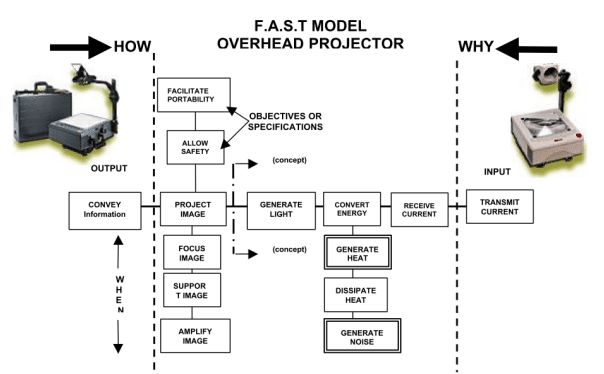In essence, FAST is a method of stimulating organized thinking about any subject by asking thought-provoking questions. In these questions, the subject is expressed by a verb and a noun together with an occasional modifier. In Value Engineering terms, this verb and noun combination is called a function. As the answers are agreed upon, they are also arranged in a unique manner relative to each other on a diagram. The diagram thus formed is called a FAST Diagram.
Example of FAST Diagram


FAST is a method of stimulating organized thinking
When the FAST Diagram is being developed, each function is assigned a physical position relative to the other functions; this position is determined by the question asked. Each question is part of an organized procedure and is subject-oriented as well as creatively oriented. A knowledge of the procedure and a list of the questions are all that is required at the outset. The remainder of the FAST Diagram develops spontaneously as the subject is expanded and discussed. Knowledge of the procedure allows the right question to be asked at the right time as the FAST Diagram is developed. If the function definition chosen for identifying the subject is not satisfactory, the subsequent questions will make this fact obvious.
Nine questions
ONLY NINE QUESTIONS are involved in the entire technique. These nine thought-provoking questions may be adapted to any subject or function. Functions relating to systems, products processes, procedures, plans, facilities, or tasks may be selected when using FAST. The nine questions used in the technique are as follows [fill in blanks with function (verb or noun) you desire to discuss:


Leave a Reply
You must be logged in to post a comment.